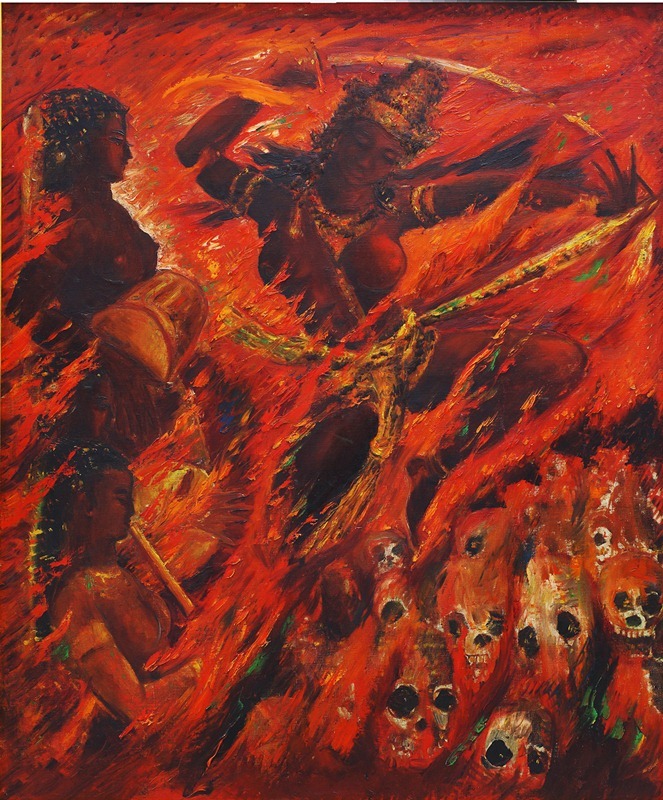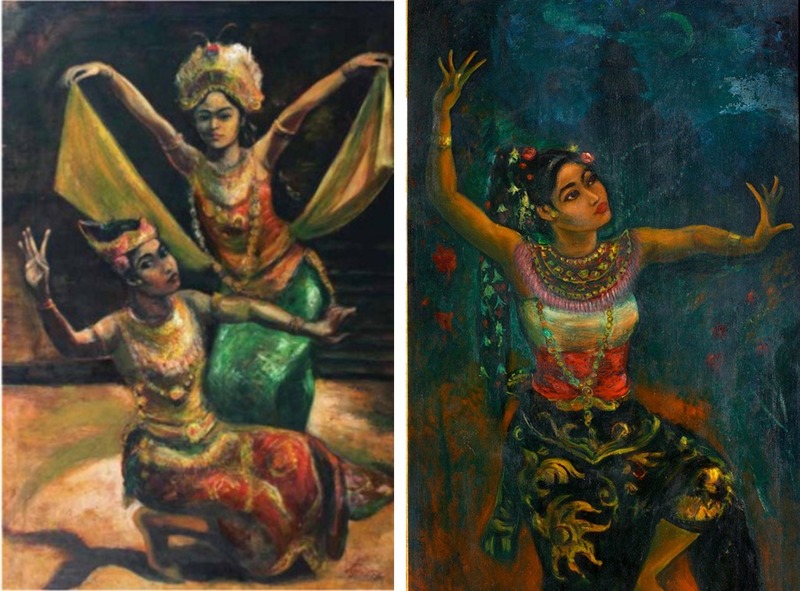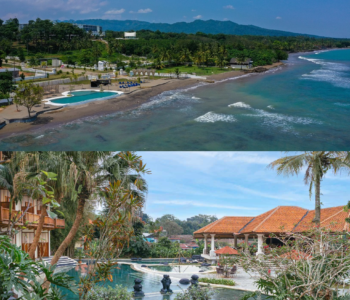In 1947, two Indonesian painters— siblings Agus and Otto Djaya—arrived in the Netherlands. To place this in context, we have to remember that while Indonesia had proclaimed Independence on 17 August 1945, not long thereafter the Dutch military with the support of Allied Forces returned to reclaim sovereignty over their former colony. They forced the Indonesian government out of Jakarta, to Yogyakarta. Indonesia entered a state of war, the Revolutionary War (1945-’49).

Agus Djaya claimed to have been offered the opportunity to study in the Netherlands on a Malino scholarship, which was initiated by van Mook, the acting Governor General of the Netherlands Indies at the time. While the painter may have attended some classes at the Royal Art Academy in Amsterdam, a letter of introduction from a public relations officer of the Ministry of Foreign Affairs, noted that he was a representative of the “Merdeka” newpaper and publishing company. Indeed, he seemed to play many roles.
Be that as it may, Agus Djaya and his brother Otto were well-received by the artistic community in the Netherlands. As early as 1947 the Stedelijk Museum staged an exhibition of their artworks, the catalogue of which had a provocative cover in red and white, symbolising the Indonesian flag. The following year an exhibition of works by Indonesian artists was held at the Indisch Museum, with their assistance. The art works of Djaya brothers were also exhibited in Brussels, France, and Monaco.
As announced in a Dutch language news article published in Indonesia, while Otto stayed on in Europe for another three months, Agus Djaya returned to Indonesia in 1949 on the same flight that brought Mrs Herawati Diah (the wife of BM Diah, the owner of the Merdeka publishing company). Some letters of recognition/awards from the Ministry of Defence in the 1950s commended Agus Djaya for his role in the Revolutionary War, although he had spent most of his time in Holland, on a scholarship paid for by the Dutch government. This seems quite interesting, but in an interview in 1999, Otto Djaya mentioned that Sukarno assigned him and his brother as spies during their time in Holland. Unfortunately he did not go into further detail about what his specific tasks were.
Born in Pandeglang, Banten, Agus Djaya always played important roles in the world of Indonesian art. He was chairman of Persagi, which is commonly considered as the first Indonesian association of painters established in 1938. Then he headed the fine art division of the Keimin Bunka Shidoso cultural centre of the government of the Japanese occupation.
As we can see from the catalogue of the exhibition at the Stedelijk Museum in 1947, Agus Djaya’s early works of art seemed spontaneous and expressive. During this period his works seemed not too much different from the works of his brother Otto, whose works appeared quite humorous.
Back in Jakarta, Agus Djaya worked in his studio and opened his art gallery called “Nan Djaya” (“The Victorious”) on Jalan Timor in Menteng. In 1953, the art supplies stored in the gallery caused a fire. Eventually, the painter moved to Bali. He established his studio and gallery in Kuta.
In the 1950s Agus Djaya seemed to start taking a close look at the visual cannons of the reliefs of Hindu and Buddhist Javanese temples, and adopted them into his compositions, which seemed to have become more sophisticated. Sukarno seemed to frequent his studio and collected his paintings. The President might have commissioned him or helped inspire him to create monumental large paintings of myths and legends such as State of Nirvana and Arjuna’s Wedding.

Although his art studio and gallery was damaged during the political upheaval in 1965, Agus Djaya continued to live on Bali. In the 1970s his gallery was relocated in Sanur.
After Sukarno’s fall, it was clear that Agus Djaya had lost his main patron and guiding light. He continued to paint good paintings about various themes and subjects, from everyday life, cultural performances, myths and legends, to more personal subjects such as friends and family or personal experiences, but only occasionally would he produce a work that really stood out.
One of his self portraits show him as a rather pretentious artist, turning himself into someone with the likeness of Salvador Dali, while another shows him as an artist that as any ordinary man can become distracted by an attractive woman. Artists can dream about becoming great masters, but it is undeniable that eventually it is their patrons that shape how great they eventually become. Perhaps the tale of Agus Djaya can offer lessons to the Indonesian artists of today. On the other hand, lets think again: has anyone actually done an in-depth study on his art? Shouldn’t we perhaps revisit Agus Djaya’s work? This year, the Stedelijk Museum in Amsterdam launched an exhibition that takes another look at their show about the Djaya brothers in 1947. Indonesian art historians should take it as a challenge.







